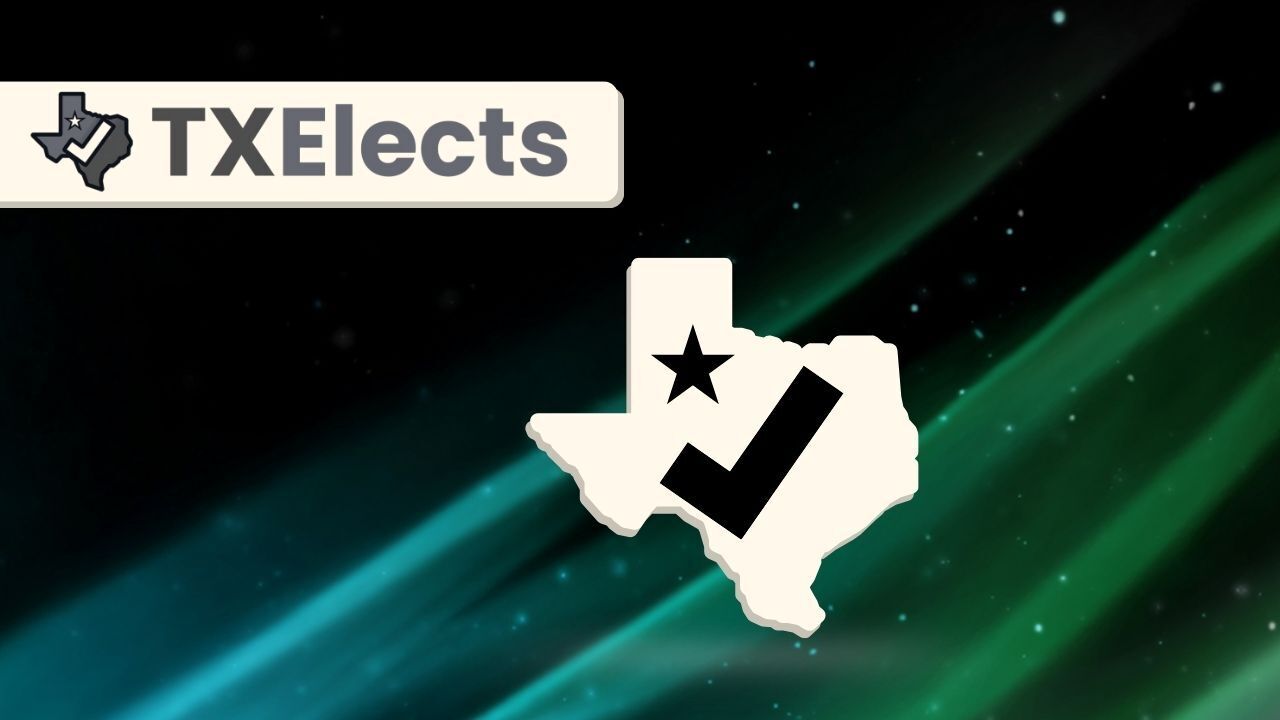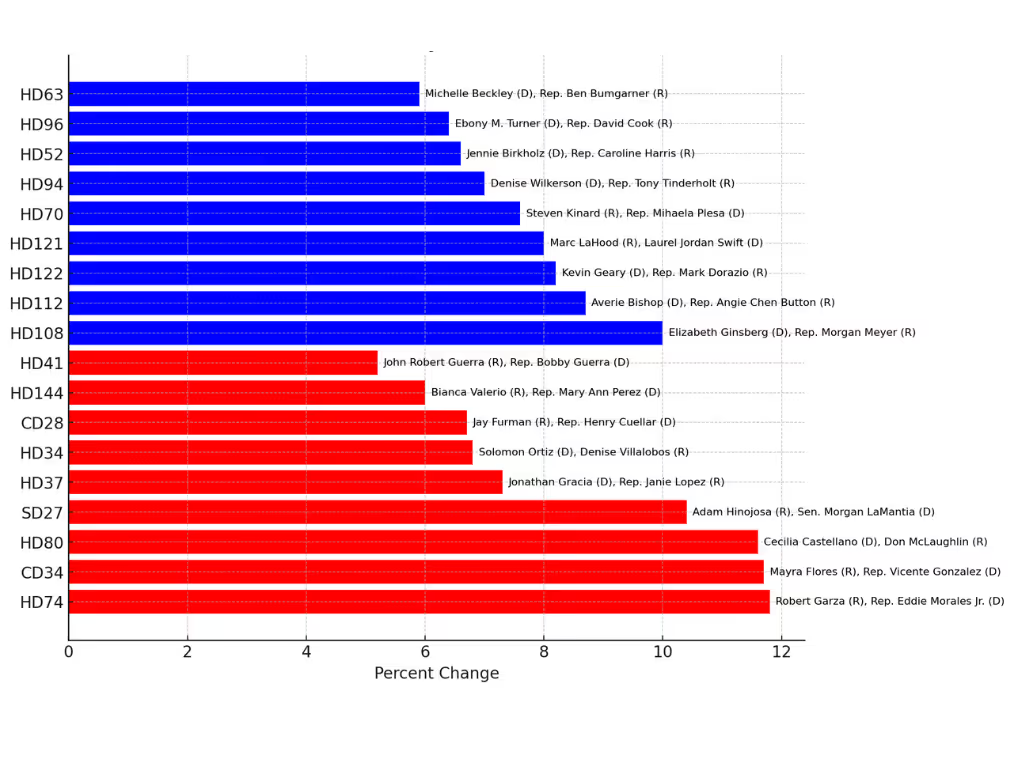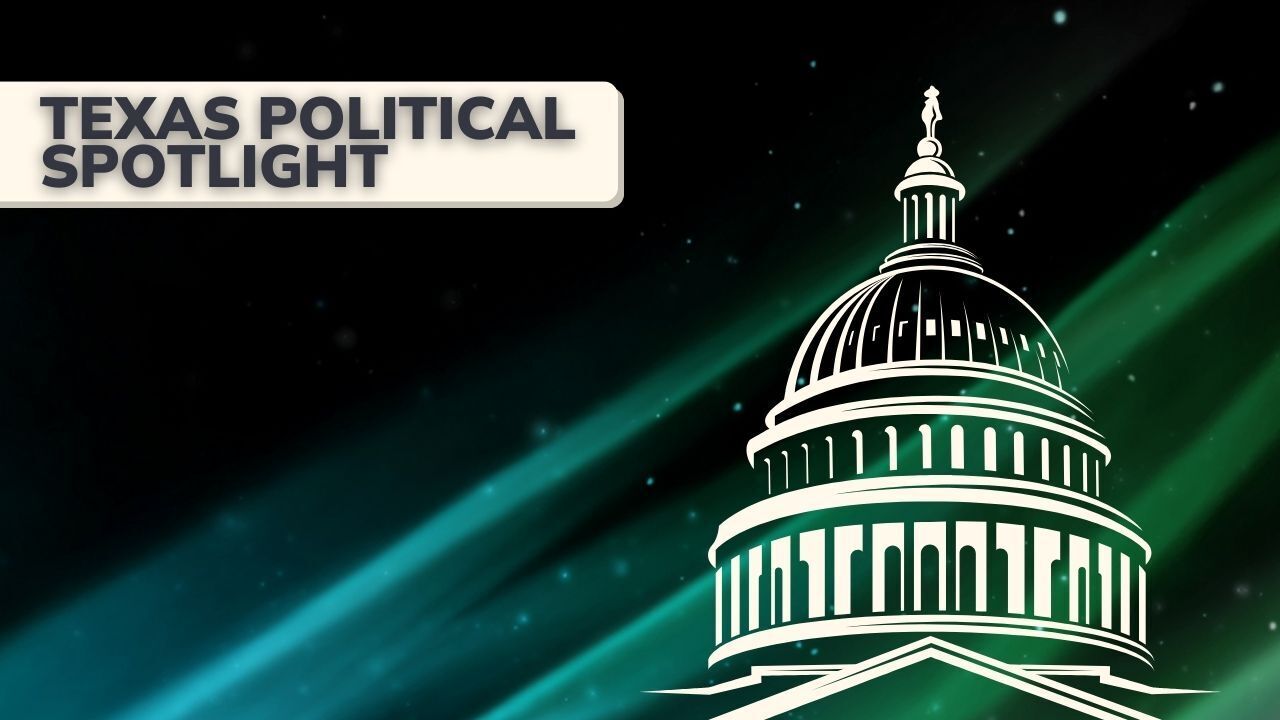
TXLege Election Day Countdown (T-80 Days)
By Jeff Blaylock - Founder & Senior Editor
August, 16, 2024
We begin the final sprint to Election Day with many things already known, or all but certain, and can speculate on some down-ballot impacts of the changing presidential race.
State Legislative Control Unlikely to Shift
The state House and Senate will remain solidly in Republican hands. Enough House seats are rated Safe Republican (47) or Likely Republican (30) to clinch the majority even if Democrats were to sweep everything else. Republicans should win most of the collective seats rated Lean Republican (8) and Toss Up (3), and the party should pickup at least one Democrat-held seat. We rate open HD80, where longtime Rep. Tracy King (D) is not seeking re-election, as Likely Republican. We have HD74, which is being defended by Rep. Eddie Morales, rated Lean Republican.
Any change in statewide leadership will thus depend on two factors outside the voters’ power. In the House, it would require the members to elect a different leader over Speaker Dade Phelan, Gov. Abbott, and Lt. Gov. Patrick are not on the ballot this year and will remain in those positions unless a second Trump presidency results in one or both being tapped for federal positions. If this were to happen, it would likely happen during the legislative session. This would also apply to other statewide offices if any of them were chosen by Trump to serve in his administration.
Potential Impact of Harris at the Top of the Ballot
Replacing President Biden with Vice President Kamala Harris at the top of the ballot will have no tangible impact at the state level, but it could have intangible impacts that affect the margins. According to the most recent Texas Politics Project poll, Biden (39/53) and Harris (35/51) had nearly the same approval ratings. Importantly, Harris has nearly the same strong negatives as Biden but slightly lower positives.
The table compares the favorability ratings of Biden, Harris and former President Trump split out by key voting groups. The numbers in parentheses are the percentage of poll respondents who said their approval and disapproval was strong.
Group
Biden
Harris
Trump
Overall
39/53 (20/44)
35/51 (15/43)
45/49 (20/41)
Independents
20/66 (4/55)
18/58 (2/50)
31/59 (16/50)
Women
38/51 (19/42)
35/49 (14/41)
52/42 (36/35)
Black voters
67/21 (36/14)
64/19 (33/12)
28/65 (15/59)
Hispanic voters
41/47 (21/35)
41/42 (17/34)
37/53 (26/45)
Ages 18-29
50/33 (24/18)
47/23 (15/12)
38/50 (20/39)
4yr college degree
41/51 (23/43)
37/49 (17/41)
42/51 (27/41)
Suburban
39/55 (20/46)
37/54 (17/48)
43/51 (27/45)
Keep in mind that dividing respondents into these groups greatly decreases the poll’s sample size and thus greatly increases the margin of error. With that in mind, any ratings split between Biden and Harris could be non-existent. However, Harris was not the nominee when this poll was conducted, so she may rise or fall compared to Biden as voters learn more about her as the Democratic nominee.
Harris's Potential to Boost Voter Turnout
Harris may have intangible impacts on the state’s voters. Early indications point to increased optimism among Democrats compared to having the ticket led by Biden, and this could translate into marginal improvements in get out the vote efforts. We may also see an increase in turnout among urban and younger voters – two key blocs of voters for Democrats whose turnout typically lags compared to other groups. However, it is unlikely that Harris will be able to duplicate the surge in turnout created by former President Obama’s candidacy in 2008.
Limited Impact on Statewide and Competitive Races
Any Harris-related impacts will not be enough to flip the state’s electoral votes or change the outcome of statewide races, but they could affect competitive legislative and congressional races. Such impacts will be highly limited and localized. There are simply far too few competitive races. A total of 17 legislative and congressional races are rated as Lean Republican, Lean Democrat or Toss Up out of the 203 on the ballot. One other race – Democrat-held HD80, noted above – is likely to flip, so we will include it here.
All 18 of these districts are projected to be more Democratic than the state as a whole, but not enough for Democratic candidates to prevail in most of them. All but one of them has moved more than 5 points towards one party or the other since 2016:

Electorate Shift Since 2016
Note: This chart includes HD144, which would be rated as Lean Democrat except that Rep. Mary Ann Perez is unopposed.
The lone exception among the competitive seats is HD118, where Rep. John Lujan (R) is seeking re-election against Kristian Carranza. This district has moved less than 1% toward Democrats since 2016.
The geographic distribution of these shifts is notable and expected. All the competitive seats becoming more favorable to Republicans are in South Texas and the Coastal Bend. All the competitive seats becoming more favorable to Democrats are in the suburbs surrounding Dallas, Fort Worth, Austin and San Antonio.
Don’t discount the possibility that Harris’s candidacy also energizes lower turnout blocs of Trump supporters in the state generally and these districts in particular.
Will Key Issues Motivate Voters to the Polls?
While immigration and border issues remain strong motivators for Republican voters, the big question for this election is the extent to which abortion access and women’s issues are or remain strong motivators for Democrats. The latest Texas Politics Poll revealed:
- 48% of respondents strongly oppose preventing Texas women from accessing abortion in others states where it is legally available
- 46% strongly oppose preventing women from obtaining “medicated abortion pills”
- 47% strongly oppose penalizing Texas companies that pay for employees to travel to other states to obtain an abortion; and
- 57% strongly oppose preventing women from using IVF procedures.
Group
Restrict Travel to Other States
Prohibit Abortion Pills
Penalize Texas Businesses
Prohibit Access to IVF
Overall
24/63 (11/48)
28/62 (16/46)
28/60 (16/47)
16/68 (7/57)
Independents
12/74 (7/58)
22/65 (10/51)
16/69 (11/57)
15/66 (7/56)
Women
24/65 (12/50)
26/64 (15/49)
25/62 (15/49)
14/70 (6/60)
Black voters
17/71 (8/58)
17/72 (7/59)
15/70 (6/58)
16/71 (8/64)
Hispanic voters
31/58 (13/45)
28/62 (19/45)
26/62 (16/47)
20/59 (7/47)
Ages 18-29
39/52 (15/41)
32/58 (19/41)
37/54 (16/41)
23/56 (9/47)
4yr college degree
21/70 (12/53)
28/64 (15/50)
28/61 (15/51)
13/74 (6/60)
Suburban
20/70 (10/56)
24/68 (14/53)
26/64 (15/53)
12/75 (5/65)
Same caveats about smaller sample sizes and larger errors in the split-out groups, but it is clear such policies have some pretty high negatives, particularly denying access to IVF, particularly among suburban voters and voters with 4-year college degrees. These are key voting blocs in the suburban districts that have been trending more Democratic, so a case can be made that some of those Republican-held competitive seats could see a big enough movement to flip them.
Turnout should be on the higher side as this state goes, but neither party will particularly benefit from it, unless Harris the candidate is closer in appeal to Obama than Biden.
Buckle your seat belts. It’s going to be a rough ride.
This post has been updated to correct an error.
Meet The Author
Jeff Blaylock, Founder and Senior Editor brings over 25 years of political expertise, encompassing analysis, campaign management, government service, and advocacy. With a focus on Texas elections and legislative processes, Jeff's career includes roles such as Chief Committee Clerk for the Texas House of Representatives' State Affairs and Financial Institutions Committees.
His leadership ensured no point of order was sustained against committee legislation.
Jeff also served as a policy and budget analyst at the White House's Office of Management and Budget and the U.S. Department of Veterans Affairs, in addition to various management roles in national political campaigns. He began sharing his election insights in 2005, publishing Texas Election Source for nearly a decade. Jeff's comprehensive understanding of public policy and its impact on elections was honed during his tenure as Managing Director at Public Strategies (now Hill+Knowlton Strategies), where he advised clients on legislative strategies, public affairs, crisis communication, and brand reputation.
He holds a Bachelor's degree in journalism with a political science minor from Texas Christian University and a Master's in public policy from Georgetown University. Currently, Jeff serves as the VP of Client Services at Kith, a leading crisis management consulting firm.

Poll Shows Increased Enthusiasm After Harris Nomination & Texas Court Strikes Down Election Code Provision
By Jeff Blaylock - Founder & Senior Editor
September, 13, 2024
Today we are covering:
Poll Shows Increased Enthusiasm After Harris Nomination
A new UT/Texas Politics Project poll shows former President Trump leading Vice President Kamala Harris 49%-44% in Texas, with Democratic voter enthusiasm surging since Harris replaced President Biden as the Democratic nominee, though likely not enough to overcome Trump's advantage.
Texas Court Strikes Down Election Code Provision
The Texas Court of Criminal Appeals struck down Section 255.004(b) of the Election Code, ruling it unconstitutional for restricting political speech, potentially paving the way for more misleading campaign ads ahead of the general election.
Poll Shows Increased Enthusiasm After Harris Nomination
As expected, the replacement of President Biden as the Democratic nominee with Vice President Kamala Harris has injected new life into the presidential race in Texas, but not enough to deny former President Trump the state's 40 electoral votes. Trump leads Harris 49%-44%, according to the latest University of Texas/Texas Politics Project poll released earlier this week. Trump led Biden 46%-39% in the June poll.
The biggest change aside from the Democratic nominee is the impact of independent Robert F. Kennedy Jr.'s departure from the race. In June, 12% of respondents said they would vote for another named candidate, with Kennedy securing 8%. Now, the percentage of respondents who said they would vote for another named candidate dropped to 2%.
Harris's entry into the race has had measurable upward impacts on enthusiasm about voting among groups more inclined to support the Democratic nominee or oppose the Republican one. Harris's supporters show increased attachment, with 70% wanting her to be elected president compared to 50% in June, while Trump's supporters have remained more firmly attached to their candidate, now at 80% compared to 74% in June.
A slightly higher percentage of Democrats (52%) are now "extremely enthusiastic" about voting in November than Republicans (49%), a reversal from June when Republicans (55%) showed higher enthusiasm compared to Democrats (39%).
Key Democratic groups showing rising enthusiasm include:
- Democrats 52%, up from 39%
- Strong Democrats 63%, up from 50%
- Weak Democrats 36%, up from 21%
- Lean Democrats 39%, up from 31%
- Women 46%, up from 40%
- Black voters 44%, up from 29%
- Hispanic voters 37%, steady from 36%
- Ages 18-29 30%, up from 20%
- 4-year degree holders 53%, up from 45%
- Pro-choice voters 51%, up from 41%
Conversely, Republican enthusiasm has mostly dropped or remained steady except among white voters and those with a high school diploma, two key blocs for Trump:
- Republicans 49%, down from 55%
- Strong Republicans 58%, down from 68%
- Weak Republicans 34%, up from 29%
- Lean Republicans 42%, down from 58%
- Men 50%, steady from 49%
- White voters 54%, up from 49%
- Ages 65+ 64%, steady from 62%
- Rural voters 52%, steady from 53%
- Pro-life voters 50%, down from 55%
- High school diploma holders 51%, up from 45%
- Church attendees (more than once a week) 54%, up from 51%
Interestingly, voter enthusiasm has dropped among those with less than a high school diploma, with 22% now "not at all enthusiastic" about voting, compared to 10% in June. Independent voter enthusiasm rose to 30%, up from 24%, but remains low. Suburban voter enthusiasm also slightly increased to 49% from 46%, as did voters aged 30-44, now at 37% compared to 34%.
While caveats about the margin of error in smaller subsets apply, the overall trends indicate new energy on the Democratic side, while Republican enthusiasm remains steady or slightly down. This newfound enthusiasm could translate into more Democratic votes, but may not be enough to secure more victories in partisan races, most of which remain non-competitive.
Farewell to Sender: Texas Court Strikes Down Election Code Provision
On September 4, the Texas Court of Criminal Appeals, in a mostly united decision, upheld an appellate court ruling finding Section 255.004(b) of the Election Code to be an unconstitutional violation of the First Amendment.
Broadly, Chapter 255 places some limits on the content and delivery of political advertising. Section 255.004 prohibits political advertising that "purports to emanate from a source other than the true source." In other words, it prohibits faking the source of an ad or other campaign communication "with intent to injure a candidate or influence the result of an election."
The case arose from a former Plano council candidate accused of sending text messages that appeared to come from a different candidate. "While the government’s interest to protect voters from confusion, fraud, and undue influence by preventing misleading communications is certainly compelling, we agree ... it is not narrowly tailored to achieve the interests advanced by the State," wrote Judge J. McClure for the majority. "While the State tries to justify the statute as a means of preventing dirty tricks, the statute here criminalizes protected anonymous and truthful political speech and has the chilling effect of impermissibly restricting engagement in political discourse."
Even if that engagement is false and falsely attributed. Expect to see more dirty tricks now that the possibility of criminal prosecution is largely compromised less than two months before a general election.


